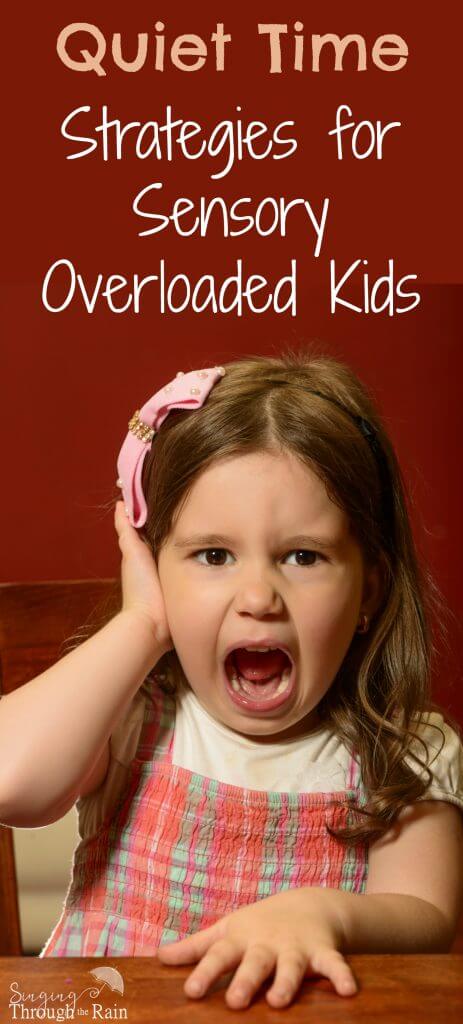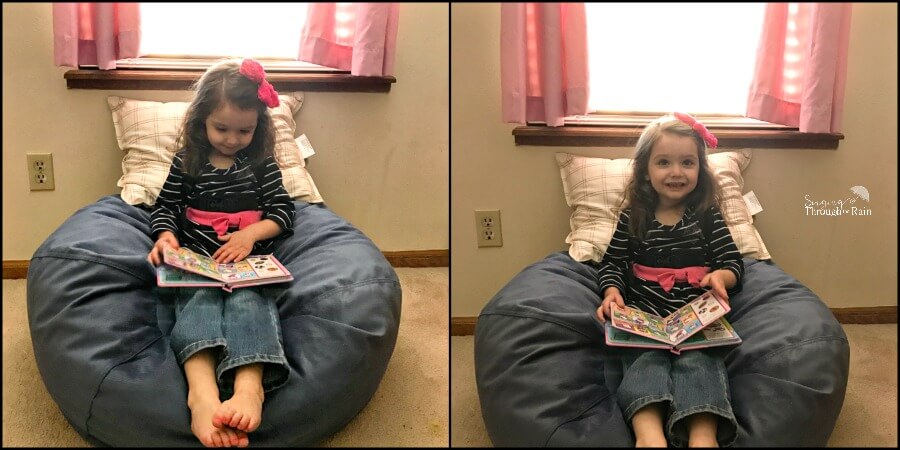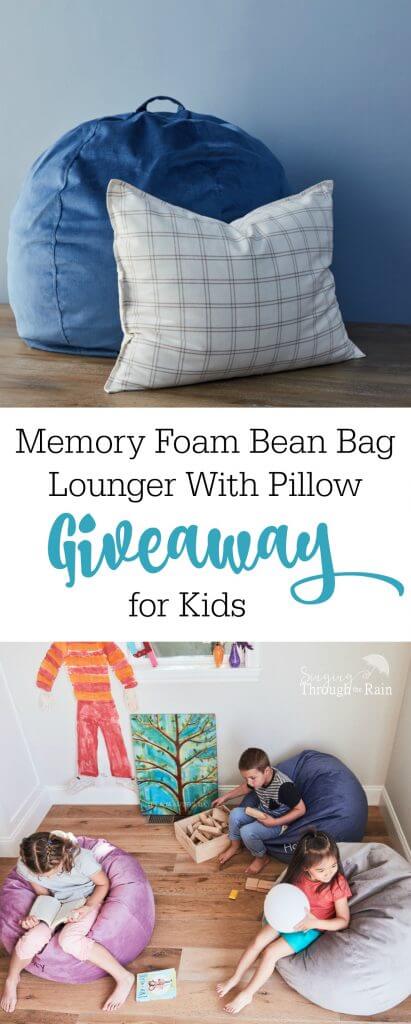Quiet Time Strategies for Sensory Overloaded Kids + GIVEAWAY
Note: I may earn money or products from the companies, products, or links mentioned in this post.
In our house, we utilize quiet time a lot. What is quiet time? It’s time alone where my kids can play or read quietly for a short time by themselves. We also use quiet time for when my kids are sensory overloaded to help them calm down.
I believe quiet time is important for children whether they have special needs or not. But how do you teach your child to play independently and how can you teach a child who is on sensory overload to self-soothe?
I’m so glad you asked! Here are some of the strategies we use at home to help my kids learn a little independence and a quieter spirit.

Quiet Time Strategies for Kids
1. Start as Young as Possible.
While not every parent will have this opportunity, starting young will help train your child to understand independent play. Self-soothing techniques are a bit harder because every child is different and they won’t all be developmentally ready at the same time.
2. Give 5-Minute Warning.
Continuing to give your child a head’s up about what’s coming up next is very helpful for both typical kids and those on the spectrum. Telling your child, “In 5 minutes it will be time to play quietly in your room” sets them up for success when the 5 minutes is up.
3. Set a Timer.
Timers are a great way to help kids visually and audibly see the light at the end of the tunnel. The time that you set will be dependent upon your child’s age and for kids who have never had these boundaries before, starting small is great!
Again, you will warn your child: “You need to play quietly in your room for 10 minutes” (show them the timer) “Mommy will come and get you when you hear the ‘beep-beep.'” This gives them a visual reminder and an audible sound that will help them know when the time is up.
4. Give Options.
If you child is not used to independent play or quiet time, offer them several options of things they can do at this time. Options such as laying in bed with a few books, playing quietly on the floor with a few toys or puzzles, etc. At times we will offer our kids an iPod to lay quietly in bed and watch.
Sensory Overload: Strategies for Kids
For the sensory-overloaded child, their body is in fight or flight mode and what you do with them to help them find their quiet place will be different from that of a typical child.
1. Go to a Safe Space.
On a good day, set up a safe space for your child. Make sure this place is calm, comfortable, and with minimal items around. Take away any distractions and take anything that the child could hurt themselves with.
A safe space will vary from child to child. What makes your child safe may not make another child feel safe so include them in the decisions and let them choose what is safe.
When your child is on sensory overload, immediately take them to their safe place. You may have to calmly pick them up and take them whether they want to or not. In fight or flight mode, they will not be able to make this decision for themselves, until they are old enough to understand these strategies and even then it will be hard.
2. Turn off the Lights.
Once they are in that spot, turn off the lights, minimize distractions, make it as calm as possible. If you can’t turn off the lights, close the curtains or use blackout curtains to help take the room down to a lower level.
3. Learn What Their Needs Are in that Moment.
Keep in mind that your child may need a good amount of time to be able to calm down. These moments will require a lot of patience and a lot of trial and error. Find what works best for your child.
Sometimes my daughter needs me in the room with her. We rock in the rocking chair and I cradle her and hug her and give her that firm, secure, input she needs and craves.
Other times she doesn’t want me to hold her or touch her. So I may follow her lead or if I am concerned about her hurting herself I will put her in her crib. She does a lot of crying at first, but in those times she works it out herself.
The older she gets, the more my daughter is understanding her need for quiet time. Sometimes when she is overwhelmed she will ask to get in her crib and lay down. In there, she will play quietly or just lay down and calm down. Other times, she does not realize she is overloaded, and I have to take her to that safe space.
4. Find the One Item Your Child Needs.
Some children have a hard time self-soothing and calming themselves down. For my daughter, it used to be she needed her paci to help her calm down and self-soothe. Now, it tends to be her special pink blanket. She will lay there and run her fingers up and down that blanket to soothe herself. Whatever it is, make sure that you have that item ready to give when needed.
Items for Your Child’s Safe Space
Awhile back I wrote a post entitled, 9 Things to Include in Your Sensory Room. While a sensory room is much different than a safe place, some of the same items can be used in both places. Keep in mind that some items on that list will not help to quiet your child, but will instead have the opposite effect.
- Rocking Chair – The rocking can be very calming to a child who is on sensory overload.
- Sensory Swing – A good sensory swing will give your child the input they need and help give them feel calm and secure.
- Tent or Fort – This is one of my daughter’s main go-to’s when she is on sensory overload. She has a pink tent in her room and she goes in there to hide and calm down. We all know if she’s in her tent, to give her the time she needs. She usually comes out when she’s ready and when her body is not as overwhelmed.
- Fidget Toys – These are extremely helpful for the child who needs to put the extra energy and feelings into something. A fidget toy or a sensory gel pad can give them the input they need and help calm them down.

- Bean Bag Chair – I recently found this amazing and luxurious memory foam lounger (bean bag) from Brentwood Home. It is perfect for the sensory child who needs to have that hugging sensation to help them fee cradled and secure.
My daughter loves this chair (and so does mommy)! It’s super soft, comfortable, and she loves that hugging sensation the memory foam gives. It’s made with non-toxic polyurethane and gel memory foam so you don’t have to worry about allergies or your child’s safety.
I love that it comes with a zipper so I can take the cover off to wash it if needed, and a lock on the zipper to prevent little hands from taking it apart. The pillow seen in the picture above is also wonderful and soft. My daughter has formed an attachment to it and gets upset if anyone takes her special pillow.
The pillow is perfect for the health-conscious parent who wants their child to have a natural and allergy-free night’s sleep. The filling is a mixture of silky smooth kapok, plus the texture of all natural latex for extra supportive resilience. The cover is 100% organic cotton detailed with a delicate plaid pattern for a low profile and minimalistic design.
Giveaway

Want to win your own safe place bundle for your kids? This bundle includes:
This bundle is worth $190.00! The giveaway will run until January 18th and the winner will be notified by email. Enter to win below!
What about YOU? Do you plan quiet times for your kids? What are some sensory strategies you have used?
This post contains affiliate links. I may make money off of links that you click if you purchase something. Thank you for supporting Singing Through the Rain.





Love these tips! Thanks for sharing!
Of course, I hope it helps!
For quiet time we go outside and take a walk in nature or simply sit together in the same room and dream about what we would like to accomplish in the future. I whole-heartedly agree that more quietude is needed in our lives, not just for the kids, adults need some screen-free space as well. Digital detoxes will be part of the future, no doubt about that!
Thanks for the great ideas.
My sensory kid is on the autism spectrum and boy does he love his special interest, so for him spending quiet time looking over his pokemon cards is perfect. For me (also spectrum), I spend time making lists or looking at garden catalogs. It’s being alone and quiet and not so much the stuff I guess…
Thanks and love,
Full Spectrum Mama